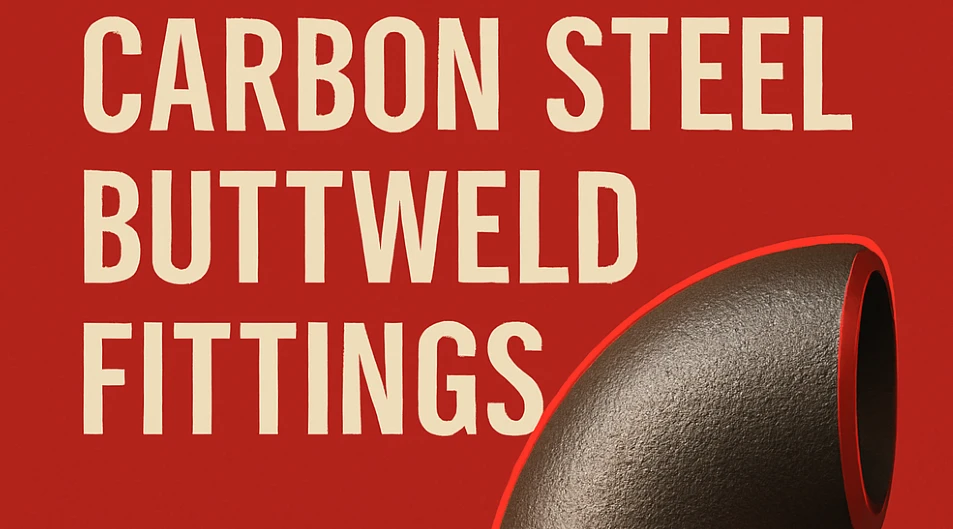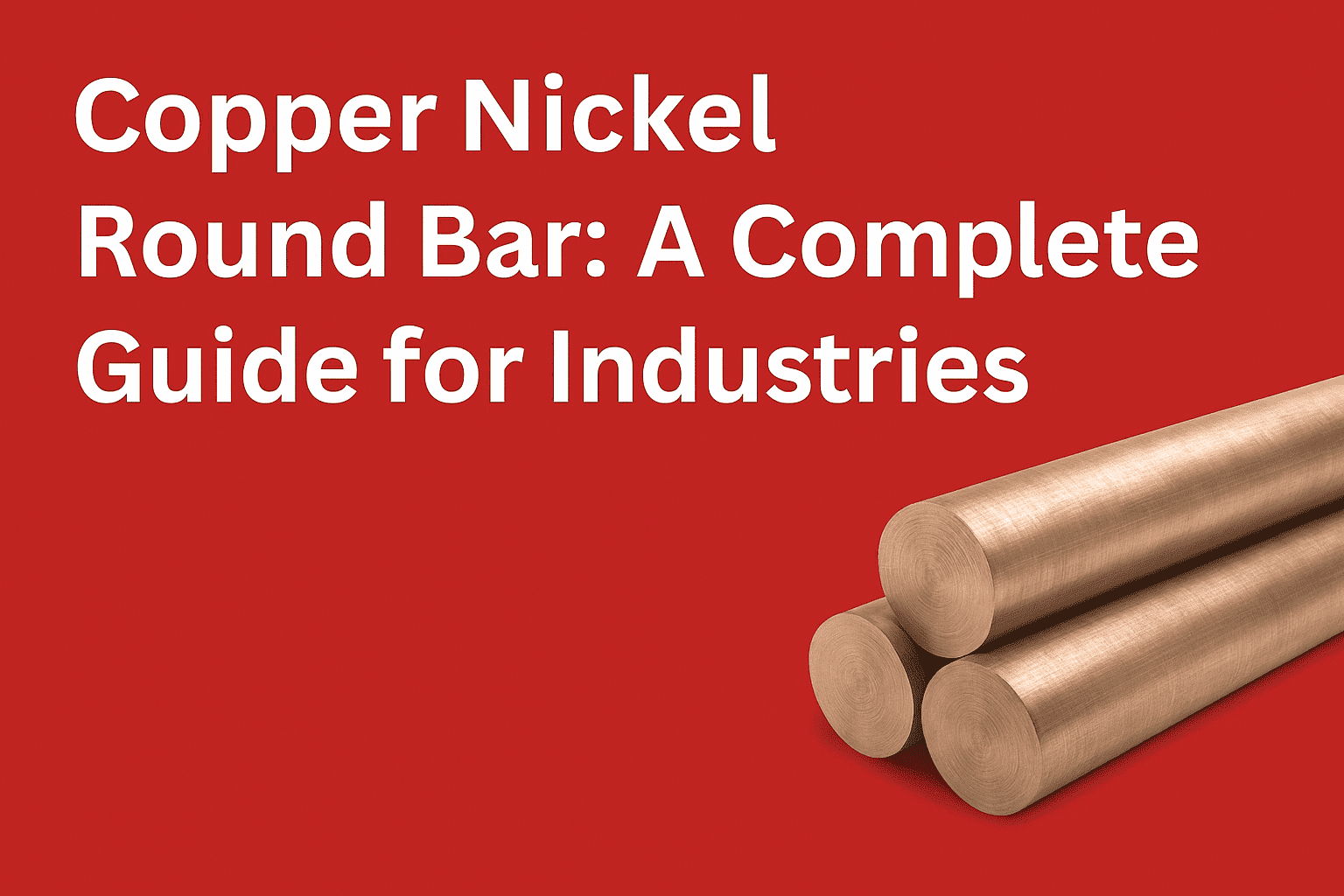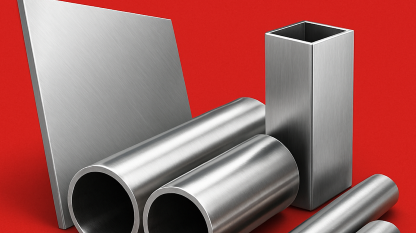
- KVN Steels on 21 Aug, 2025
Carbon Steel Buttweld Fittings: From Industrial Roots to Modern Piping Backbone
Evolutionary Roots of Carbon Steel Buttweld Fittings. The history of carbon steel buttweld fittings is deeply tied to the Industrial Revolution, when industries first demanded strong, reliable, and leak-proof piping systems for transporting steam, water, and fuel. Unlike threaded or flanged joints, which often weakened under pressure, buttweld fittings introduced the concept of seamless welding, ensuring a continuous flow path with reduced chances of leakage. In the late 19th and early 20th centuries, as steel manufacturing processes like Bessemer and Open Hearth advanced, carbon steel emerged as the material of choice due to its durability, metallurgical strength, and cost efficiency. This marked the beginning of carbon steel buttweld fittings being adopted in railways, power generation, shipbuilding, and early oil & gas exploration, laying the foundation for modern-day piping infrastructure.
Precision, Strength, and Industrial Dependability
Carbon Steel Buttweld Fittings represent the foundation of high-performance piping systems where safety, efficiency, and endurance are non-negotiable. Unlike conventional threaded or socket fittings that often create weak links in the system, buttweld fittings provide a seamless, welded joint that eliminates the risk of leakage, pressure loss, or premature wear. Engineered with meticulous dimensional accuracy, they ensure unrestricted fluid or gas flow in demanding conditions such as high pressure, extreme temperatures, and corrosive environments. Their unmatched strength and metallurgical toughness make them indispensable across industries including oil & gas transmission pipelines, petrochemical refineries, marine systems, HVAC networks, and power generation plants. By combining durability with precision, carbon steel buttweld fittings not only optimize flow control but also extend the operational life of infrastructure where downtime can mean millions in losses.
Why Carbon Steel Buttweld Fittings Outperform Conventional Alternatives
Adopting carbon steel welded fittings is more than a material choice—it is an operational strategy for industries requiring uncompromised performance, compliance, and cost efficiency. Their seamless welding capability minimizes turbulence inside pipelines, enhancing overall system efficiency while reducing energy consumption. Carbon steel buttweld fittings also absorb vibration, stress, and thermal expansion better than their alternatives, ensuring long-term reliability even in dynamic conditions. Each component, whether elbows, reducers, tees, or caps, is manufactured to stringent ASTM, ASME, ANSI, and DIN standards, guaranteeing global compliance. Options such as long-radius elbows for optimized flow, concentric and eccentric reducers to manage cavitation, and OEM-grade replacements for gaskets and seals provide industries with versatility and reliability in every installation. Beyond strength, they offer significant lifecycle benefits—superior resistance to wear, minimal maintenance downtime, and sustainable operational savings—positioning carbon steel buttweld fittings as the undisputed backbone of mission-critical infrastructure.
Future-Ready Infrastructure with Carbon Steel Buttweld Fittings
As industries shift toward cleaner energy, advanced automation, and smarter monitoring systems, the role of carbon steel buttweld fittings continues to expand. Modern manufacturing integrates high-alloy variants, corrosion-resistant coatings, and welding automation techniques, making these fittings adaptable to cutting-edge applications like hydrogen pipelines, LNG facilities, desalination plants, and offshore platforms. Their resilience in aggressive operating conditions and compliance with international safety standards make them a forward-looking investment for industries aiming at both sustainability and reliability. By clustering benefits such as high strength piping systems, leak-proof welded joints, energy efficiency, and cost optimization, carbon steel buttweld fittings don’t just sustain existing infrastructures—they future-proof them. They empower industries to build safer, greener, and more efficient facilities, reinforcing their pivotal role in tomorrow’s industrial revolution.
Key Highlights of the History of Carbon Steel Buttweld Fittings
• Origins in Industrial Revolution – Replacing weaker threaded joints with seamless welded solutions.
• Adoption of Carbon Steel – Driven by the Bessemer process and Open Hearth advancements.
• Widespread Industrial Use – Power plants, oil & gas, shipbuilding, and railways embraced them.
• Global Infrastructure Backbone – From petrochemical refineries to HVAC and heavy industries.
• Modern-Day Adaptations – Coatings, high-alloy variants, and compatibility with smart monitoring.
• Future Applications – Hydrogen pipelines, LNG, offshore drilling, and sustainable energy systems.
Industrial Expansion and Standardization of Buttweld Fittings
The history of carbon steel buttweld fittings entered a new era when organizations such as ASTM, ASME, ANSI, and DIN introduced uniform guidelines for manufacturing, testing, and dimensional accuracy. This ensured global compatibility, allowing fittings like carbon steel elbows, tees, reducers, and caps to be seamlessly integrated into large-scale projects across continents. With welding technology advancing, carbon steel buttweld fittings became indispensable for high-pressure pipelines, petrochemical plants, marine engineering, and refinery networks. Their proven ability to withstand high temperatures, corrosive fluids, and mechanical stress solidified their role as the backbone of industrial infrastructure.
Today, the history of carbon steel buttweld fittings reflects not just their past, but their future adaptability in a rapidly changing industrial landscape. With the rise of smart infrastructure, renewable energy, LNG, hydrogen pipelines, and desalination projects, these fittings continue to evolve with advanced coatings, precision machining, and integration with digital monitoring systems. Modern carbon steel buttweld fittings are designed for sustainability, energy efficiency, and global compliance, making them crucial for industries aiming at long-term operational excellence. Their transformation from simple welded connectors to high-strength, future-ready piping solutions is a testament to their lasting impact on global engineering. Businesses investing in these fittings secure not just reliable components, but a legacy of industrial progress that will carry forward into next-generation infrastructure.
Key Advantages of Carbon Steel Buttweld Fittings
• High Pressure & Temperature Endurance – Designed for challenging environments across oil & gas, marine, and power plants.
• Optimized Flow Efficiency – Reduces turbulence, cavitation, and energy loss in critical piping networks.
• Compliance with Global Standards – Manufactured in line with ASTM, ASME, ANSI, and DIN norms.
• Durability & Longevity – Resistance to vibration, wear, stress, and thermal expansion ensures extended service life.
• Versatile Applications – Suitable for HVAC systems, petrochemical pipelines, refineries, desalination units, and offshore platforms.
• Sustainability-Driven – Future-ready for hydrogen, LNG, and green energy infrastructure projects.
• Operational Cost Savings – Minimal downtime, reduced maintenance, and superior lifecycle value.









